We had the great good luck of having enough time on our last day in Aachen (and in Germany) to go for one more long walk, this time not just to the edge of Kornelimünster (like we did a couple of days ago with Ralph before dinner), but into town and beyond it. Mark and I took off after another lovely breakfast (Ralph and Ingrid had an obligation) and after a cool and cloudy start, it got brighter and warmer and eventually the sun came out–it was perfect walking weather and we enjoyed every minute.

We walked the bike/hike trail across the viaduct to the little town, which is impossibly picturesque–hard to describe and hard to show even in photographs–a little circle of old (16th- to 18th century) town houses around a market square that sits in a valley made by the river Inde, surrounded by rocky hills, and dominated by the former abbey church (and now main church in town), St. Cornelius. It origins (although only traces remain) go back to the time of Charlemagne, and other parts were added in the middle ages and in the 17th and 18th centuries. The church is a stop on many pilgrimage routes, included the Way of St. James because of the relics that have been kept here, and because the abbot was also the regional prince (Fürstabt) until the 18th century, the town was quite important and wealthy.
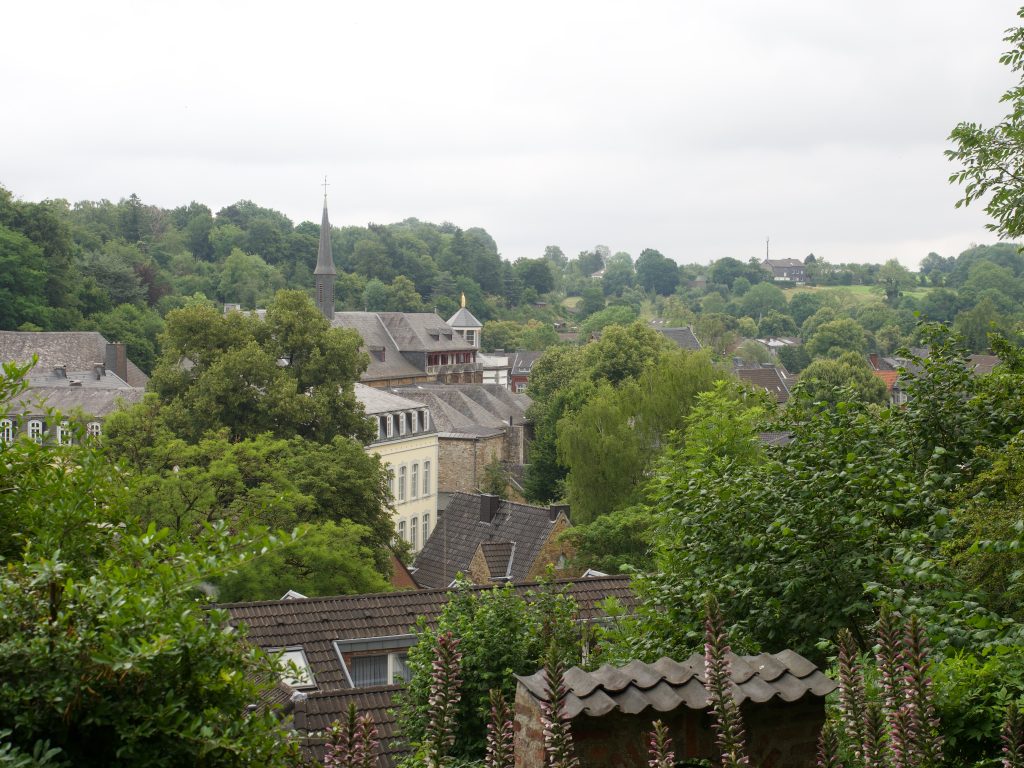


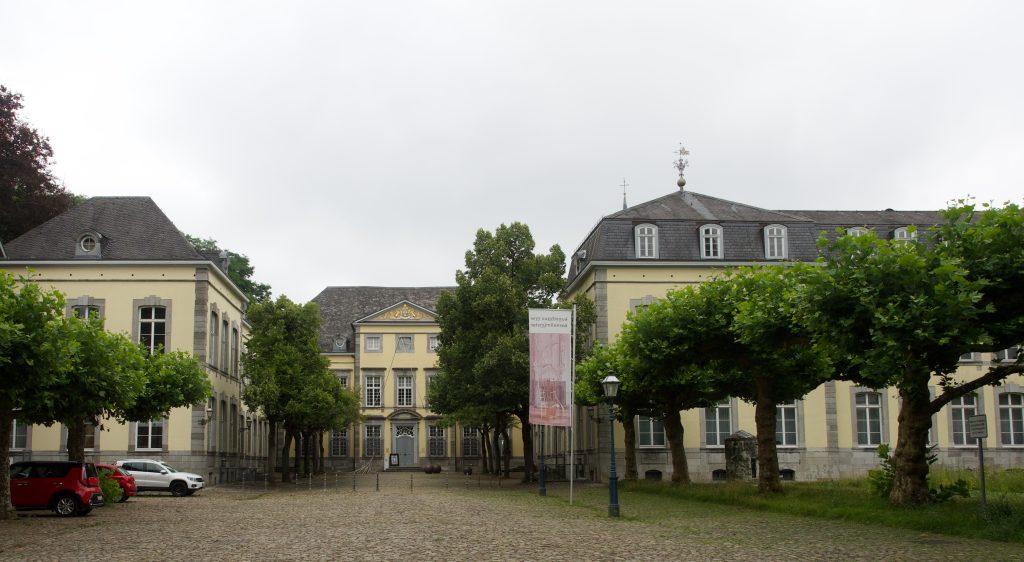
At the height of their power, the local abbots had a lavish Baroque palace (given the size of the town) that is now used for contemporary art exhibits sponsored by the state of North Rhine Westphalia (Kunsthaus NRW Kornelimünster). It typically focuses on young and upcoming artists, but right now, it features an exhibit on the history of some of the famous art schools and their students in the region (Düsseldorf is the most famous one, associated with the artist Joseph Beuys). The show was really well put together to make you reflect on the pros and cons of such art schools and the art-transforming rebellions that happened there (especially in the 1960s and early 1970s). And as part of it, they included some world-famous artists that taught or studied at these academies, and the archival work of some of the less famous, but sometimes more interesting teachers and creators associated with them. I was blown away to see, in a town of 3,500 and in a baroque museum space that is sparsely visited (not to mention FREE), works by Beuys himself, by Nam Jun Paik, by Günther Uecker (who recently passed away), by Gerhard Richter (whose works we saw in Berlin) and by Katharina Grosse (whose massive paintings we saw in Hamburg). In addition, the museum had random baroque decor on ceilings and walls, and visitor bathrooms (and exhibit spaces) built into its ancient cellars with vaulted ceilings! Just an amazing space.
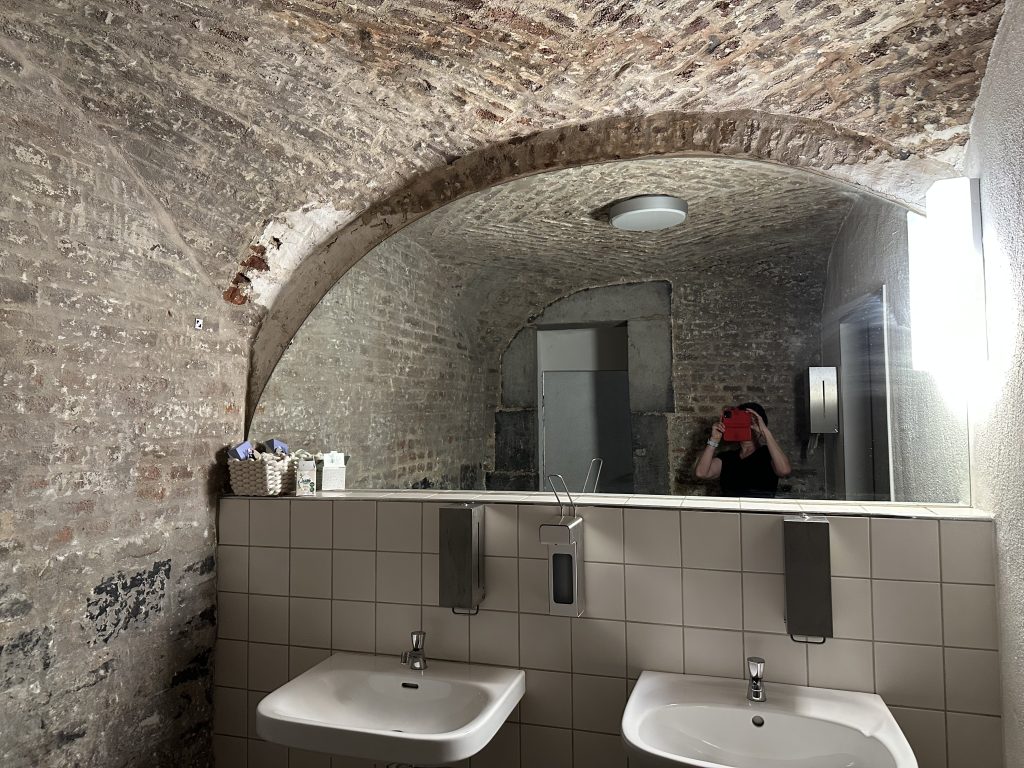
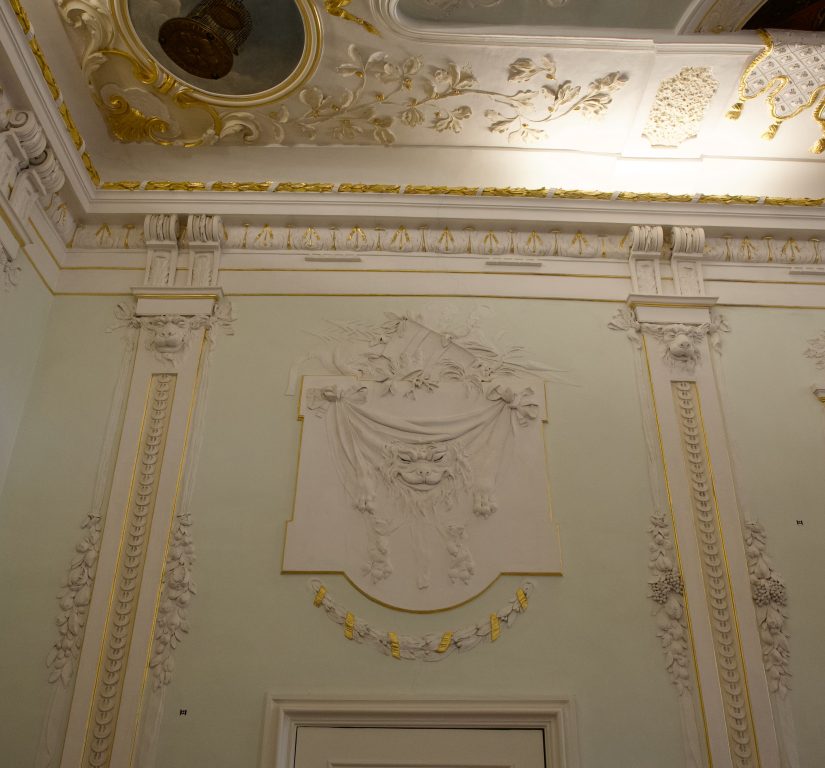
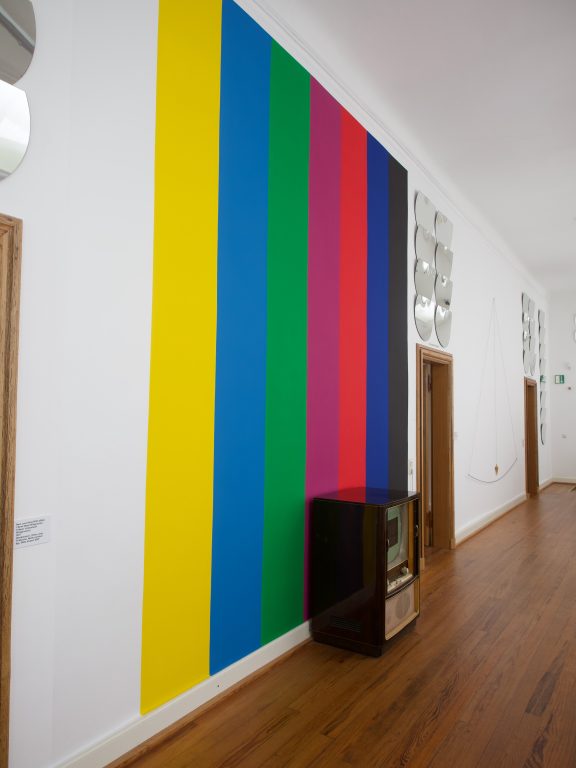

We also explored some areas around the town that Ralph and Ingrid had mentioned: a little mountain church with a traditional churchyard (on a site where a Roman tower used to stand), a tiny Jewish cemetery with graves for two local families named Kaufmann and André, and a site where the remains of a Roman temple from ca. the year 0 were found in the early 20th century. Then we walked back to Brand (where Ralph and Ingrid live) through the lovely mature forest along the river Inde, eventually emerging on a road from which we could again see the viaduct, this time on our left. The views everywhere were just stunning, and we came home from a 7-mile / 10 km hike happy and hungry, and had one more lovely meal of bread and cheese (including a heavenly brioche from the local bakery, with fresh apricot jam) and a fabulous café au lait (Ingrid makes the best milk foam, even with oatmilk!).
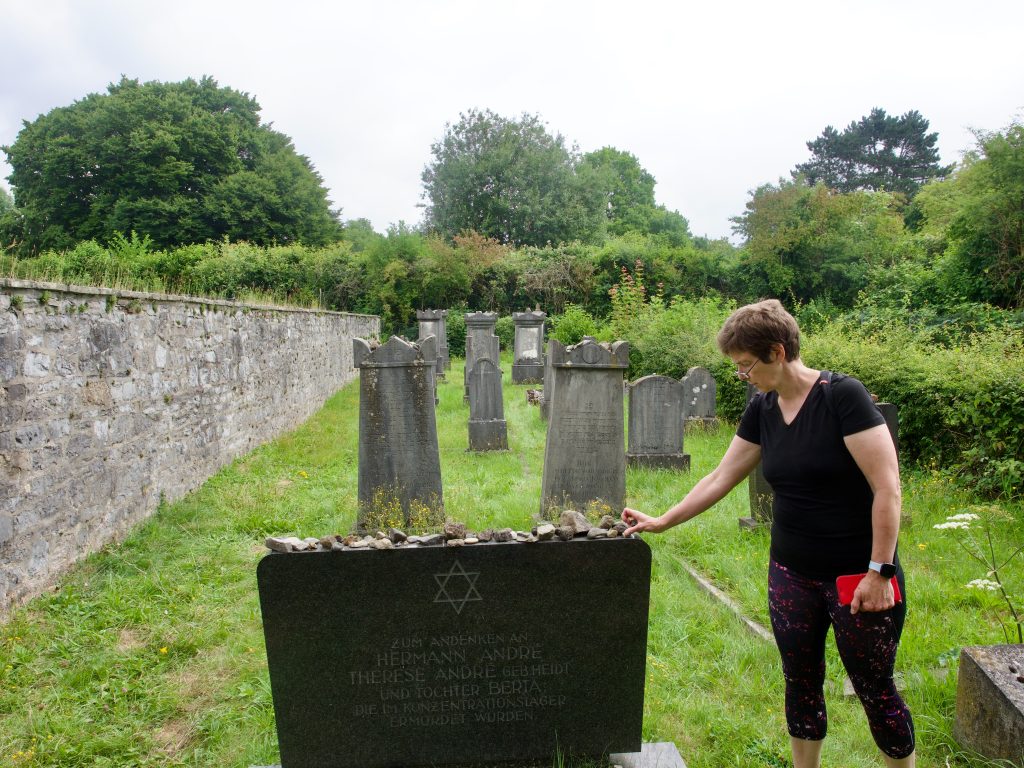
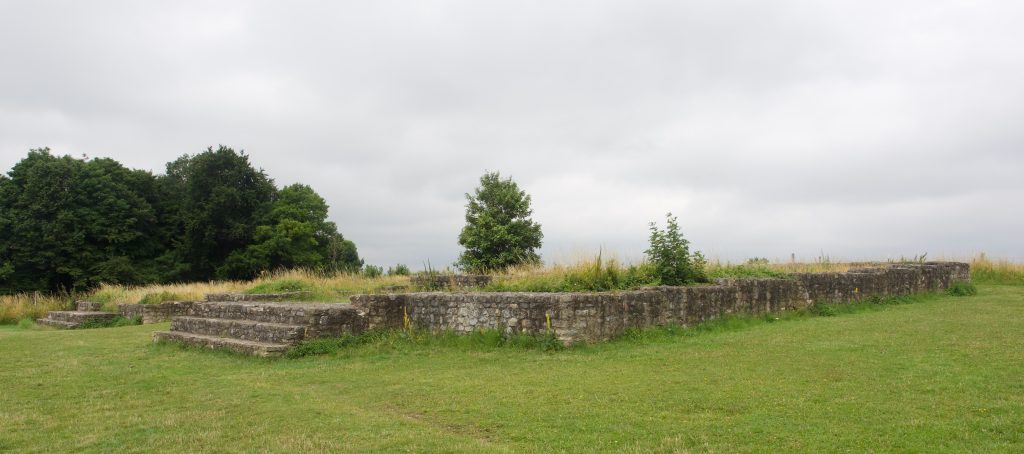
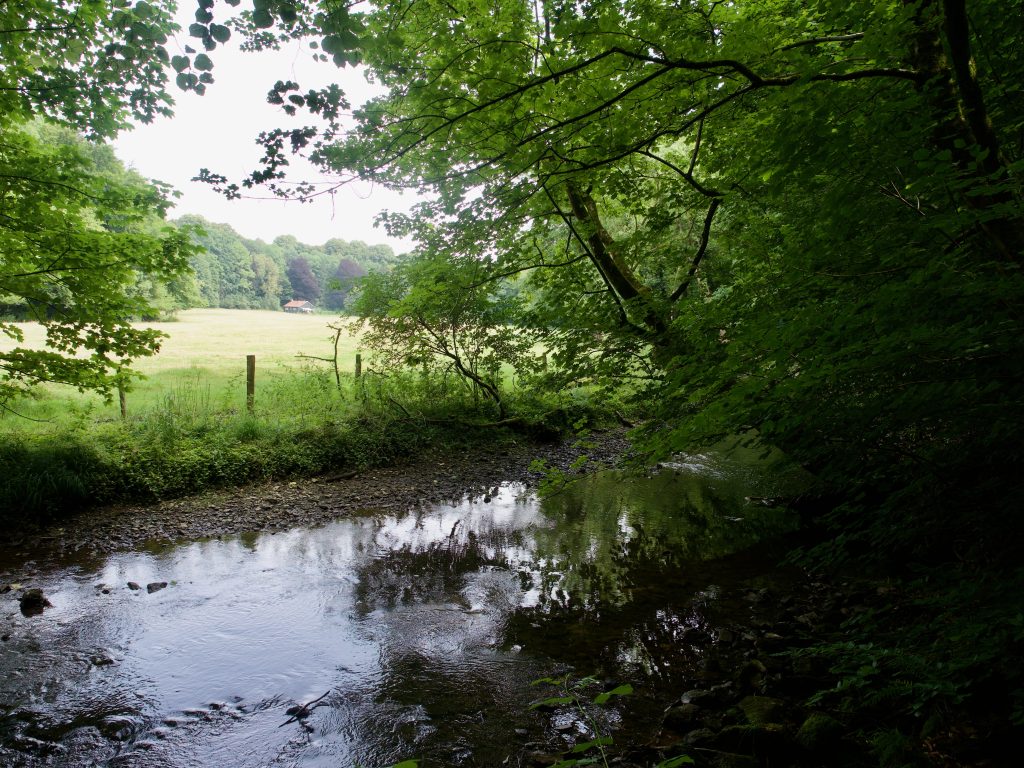
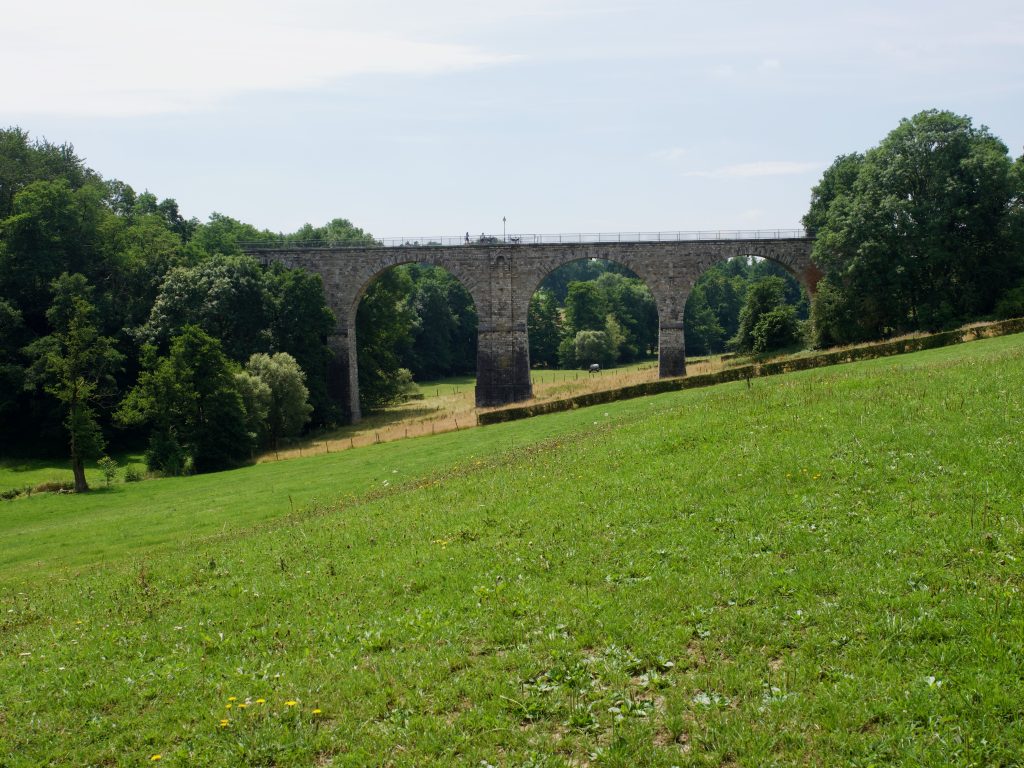
Then it was time to leave, and Ingrid and Ralph drove us across the Belgian border to nearby Welkenraedt, so we could get our start from Belgium and use our Belgian train passes to get back to Brussels. It was a lovely train ride, about 2 hours, and since we are not staying in downtown Brussels, but right by the airport, we only took the train to a tiny regional train station called Diegem, and arrived shortly after 6. Our hotel is located a stone’s throw from there and has a free shuttle to the airport tomorrow morning, but it is about the most anonymous and generic space I’ve stayed in since we came to Europe 5.5 weeks ago. There is nothing residential (never mind historic or parklike) anywhere near here (apparently, just industry/office parks that want the airport nearby), and it was a challenge to find a grocery store or restaurant beyond the hotel’s own–thankfully, a convenience store that was only 10 minutes away was still open when we realized we needed to act fast and get there before 7 pm. We grabbed a couple of ready-made salads, a cherry tart for dessert, and some yogurt for tomorrow morning, and feel prepared to survive the sterile environment of the “NH” hotel for one night (very clean, lovely walk-in shower, very high ratings, but no personality whatsoever).